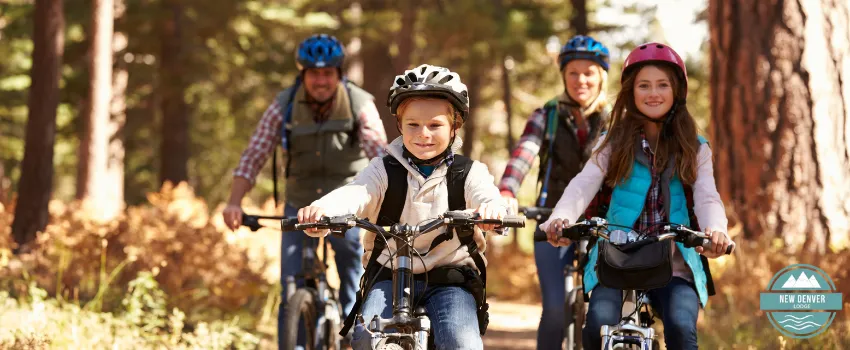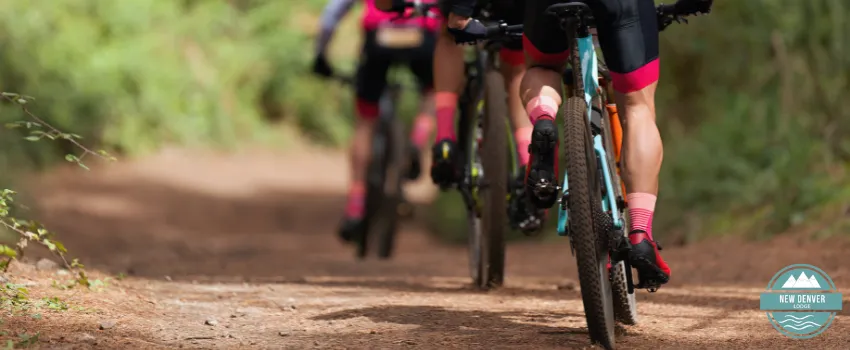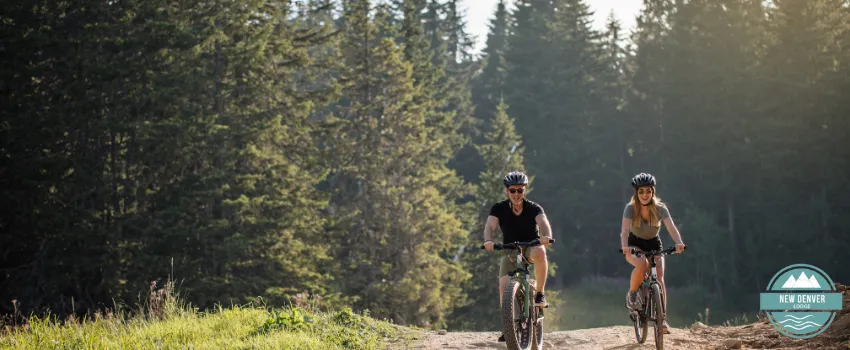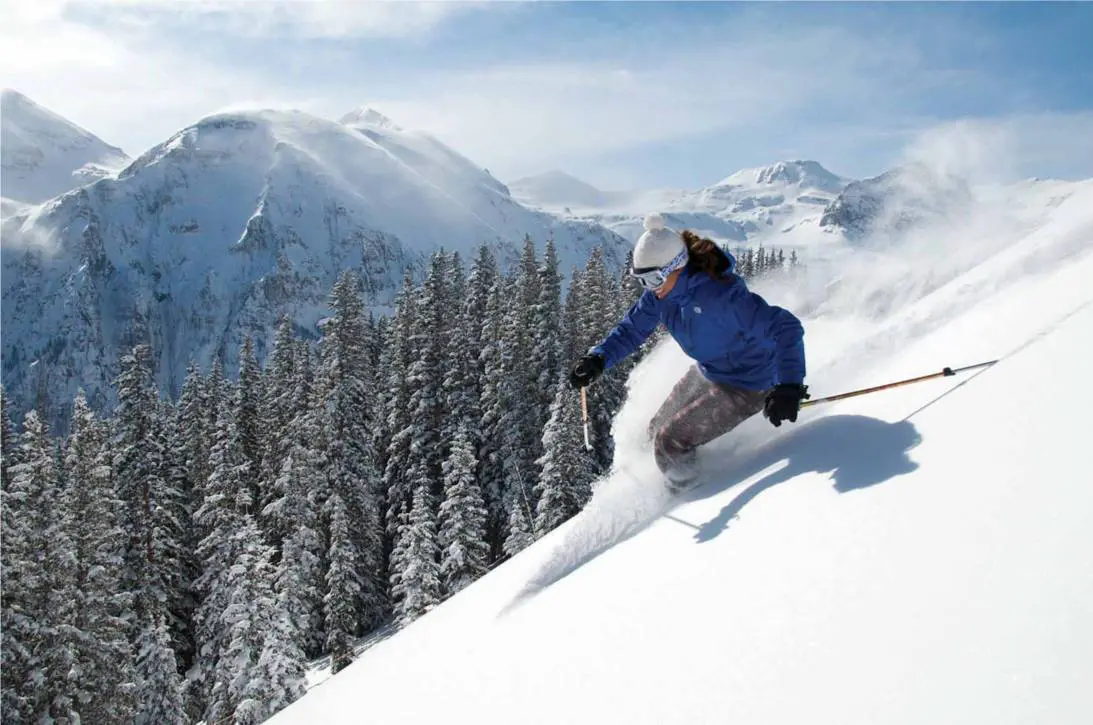Mountain biking is more than just a sport — it’s an invitation to the wilderness and an exhilarating dance between machine and terrain. As cities become more bustling, many individuals are gazing at nature, seeking adventures that thrill the spirit and nurture the soul.
For those intrigued by the call of the trails, mountain biking for beginners emerges as a perfect blend of physical exertion and natural communion. The vast landscapes, steep terrains, and biking terminologies might seem overwhelming to the uninitiated. But fret not, as every seasoned rider once stood where you are — on the edge of a new journey, ready to pedal into the unknown.
This beginner’s guide to mountain biking will help you navigate the twists and turns of mountain biking. It will equip you with knowledge, confidence, and a hearty dose of enthusiasm.
Is Mountain Biking Good for Beginners?

Mountain biking promises both adrenaline and a connection with nature. But is this challenging terrain truly beginner-friendly? Here are its benefits to determine its suitability for those just starting:
1. Health Benefits
Mountain biking can bring various health benefits, from reducing stress to improving cardiovascular fitness. Studies have found that regular exercise, such as biking, can help reduce feelings of anxiety and depression. Not only will cycling improve your mental well-being, but it also has many physical health benefits.
Regular aerobic activity strengthens the heart muscles and lowers cholesterol levels, which helps reduce the risk of heart disease. Cycling is also an excellent way to improve body strength and tone muscles.
In addition to improved physical health, mountain biking improves balance and posture, increases bone density, improves coordination, promotes flexibility, enhances self-confidence, and improves sleep quality.
2. Community Engagement
Participating in mountain biking brings people together and builds community connections. It allows individuals of all ages, abilities, and backgrounds to come together and share a common interest.
It provides a platform for social interaction while enjoying the outdoors. Those involved in the activity often form strong bonds with one another due to the shared experience of exploring nature on two wheels.
Furthermore, it is excellent for building relationships and encourages active involvement from members of local communities. Volunteering at organized events gives riders a chance to contribute to their local cycling scene and foster meaningful connections with others passionate about the sport.
3. Skill Development
Mountain biking is an incredibly dynamic sport requiring a solid knowledge base and technical skills to engage with it entirely. These can be acquired through lessons, workshops, or instructional courses available at local bike shops or online resources.
Also, beginners must participate in social rides with more experienced riders to observe their technique and ask questions. This will help them become more confident and proficient in riding and provide insight into proper trail etiquette.
4. Potential Challenges and Risks
Navigating mountain biking terrain can present various challenges and risks that must be considered when engaging in the sport. Uneven or rocky trails, unpredictable weather, and steep inclines pose potential hazards to riders.
While some risks may be avoided by riding on established trails, other risks, such as wildlife encounters, are more challenging to prepare for.
Cyclists should also always wear protective gear, including helmets, gloves, and knee pads, to protect against falls or other injuries. They should also ensure their bike is in good working order before embarking on their journey, as malfunctioning components can contribute to accidents.
What Should a Beginner Mountain Biker Know?

Mountain biking is an exciting, rewarding, challenging adventure for novice riders. Before beginning, understanding the following information is crucial:
1. Bike Anatomy
Beginner mountain bikers should be aware of the different parts of their bike and how they impact performance. The main components include wheels, tires, brakes, suspension systems, frame materials, handlebars, and saddle positions.
Wheels and tires provide grip and traction on trails and reduce rolling resistance. Brakes are necessary for stopping quickly and safely to navigate tough terrain confidently.
Suspension systems can make riding more comfortable by absorbing shocks from bumps in the trail, while frame materials provide strength and durability for long-term use. Handlebar shape affects handling control, while saddle position is critical for comfortability during long rides. Understanding each component’s purpose is needed to make informed decisions when selecting mountain biking gear for beginners.
2. Terrain Familiarity
Familiarity with the terrain is significant for mountain bikers to consider when selecting a suitable route. It is necessary to know the kind of surface and gradient of the track and any obstacles or hazards that may be present.
A novice rider should begin by riding on trails with minimal technical difficulties, such as fire roads or double-track paths. Gradually increase the level of challenge by exploring steeper grades and more treacherous single-track trails, allowing for increased skills and confidence in one’s abilities.
Riders should also become familiar with mountain biking techniques for beginners before attempting more challenging terrain. Included here is its ability to climb, descend, corner, and drop off ledges or jumps.
3. Essential Gear
The proper gear is essential for safe and successful mountain biking, regardless of experience level. A good quality mountain bike is the most vital piece of equipment, as it must be able to handle off-road riding over various terrain.
The best bikes will have suspension systems, disc brakes, and tires designed for off-road use. Other required items include a helmet, gloves, eye protection, and protective clothing.
4. Fitness Prep
Preparing for a mountain biking adventure requires a certain level of physical fitness. Before embarking on the journey, assessing one’s current physical condition and performing exercises that will help build strength, endurance, flexibility, and balance is essential.
Strength training can include weight lifting or bodyweight exercises such as push-ups, squats, and lunges. Endurance can be improved through aerobic activities such as running, cycling, or swimming. Stretching and yoga increase flexibility, while core strengthening exercises like planks work on balance.
5. Starting Small
As a newcomer to the sport, one must build skills and confidence gradually. To have a safe and enjoyable riding experience, beginners must choose trails suited to their skill level.
Trails should be chosen based on length. Beginners should also consider trail traffic; less heavily trafficked trails will create fewer distractions or worries when mastering the basics of mountain biking.
Basic Rules of Mountain Biking

Mountain biking is an exciting way to explore the outdoors, but riders must remember the following mountain biking tips for beginners:
1. Follow trail etiquette.
Mountain biking is a rewarding experience but can also be hazardous if riders do not practice proper etiquette. Understanding the rules and regulations for using trails ensures everyone has a safe and enjoyable ride.
One of the most common forms of trail etiquette is yielding to other riders on the trail. This means that when another rider approaches from the opposite direction, mountain bikers should slow down and let them pass. Failing to yield can result in an accident or injury.
Mountain bikers should also always be courteous and friendly when encountering other riders on the trail. Keeping conversations short and limiting loud noises will help maintain a peaceful atmosphere for all participants.
2. Safety first.
Safety is paramount when mountain biking and should always be the riders’ priority. If safety precautions are not taken, one must be aware of the potential risks involved in this activity, including injury or even death.
Cyclists should always wear a properly fitted helmet that meets American Society for Testing and Materials (ASTM) standards. They should also wear other necessary protective gear, such as gloves and elbow and knee pads. Furthermore, riding with a group is advised for added safety.
Finally, cyclists should carry an emergency kit in case of an unexpected accident or mechanical issue while on the trail. This kit should include a first-aid kit, a spare tube, and tire levers.
3. Ride prepared.
Preparing for a mountain biking ride guarantees a safe and enjoyable experience. Before taking off, the bike must be in proper working order with appropriate tire pressure, adjusted brakes, and secure components.
It is also necessary to bring essential repair items such as a pump, spare tubes, and tools for fixing flat tires or other minor repairs. Additionally, riders should be outfitted with the right gear, including an appropriate helmet, gloves, closed-toe shoes, riding glasses or goggles, and protective padding.
4. Respect the environment.
Respecting the environment while mountain biking prevents damaging fragile ecosystems and trails. Mountain bikers should take extra care in areas of natural beauty, adhere to local laws and regulations, and be conscious of their impact on the landscape. This includes staying on marked trails, not disturbing wildlife or plants, and disposing of rubbish properly.
Riders must also not ride too close to each other or cause excessive noise that could disturb animals living in the area. Moreover, it’s also a good idea for cyclists to get involved with local environmental groups or volunteer initiatives dedicated to preserving the land where they plan to bike. By doing so, cyclists can help protect vulnerable habitats from human interference.
Key Takeaway
Mountain biking provides an exhilarating experience for those exploring the outdoors and testing their physical limits. It is an activity that can be enjoyed by people of all ages, from young children to experienced adults.
Although it may seem intimidating at first, a little knowledge about techniques and safety measures can go a long way in helping novices have an enjoyable ride. With some practice and patience, anyone can quickly become an expert mountain biker.
Dive into new adventures with New Denver Lodge.
Ready to shift from pedaling to powder? If mountain biking has sparked your love for thrilling terrains, why not elevate your adventure with some alpine escapades?
Discover the exhilaration of gliding down pristine slopes with our adrenaline-pumping backcountry skiing in British Columbia. It’s a wild winter ride awaiting you at New Denver Lodge!







